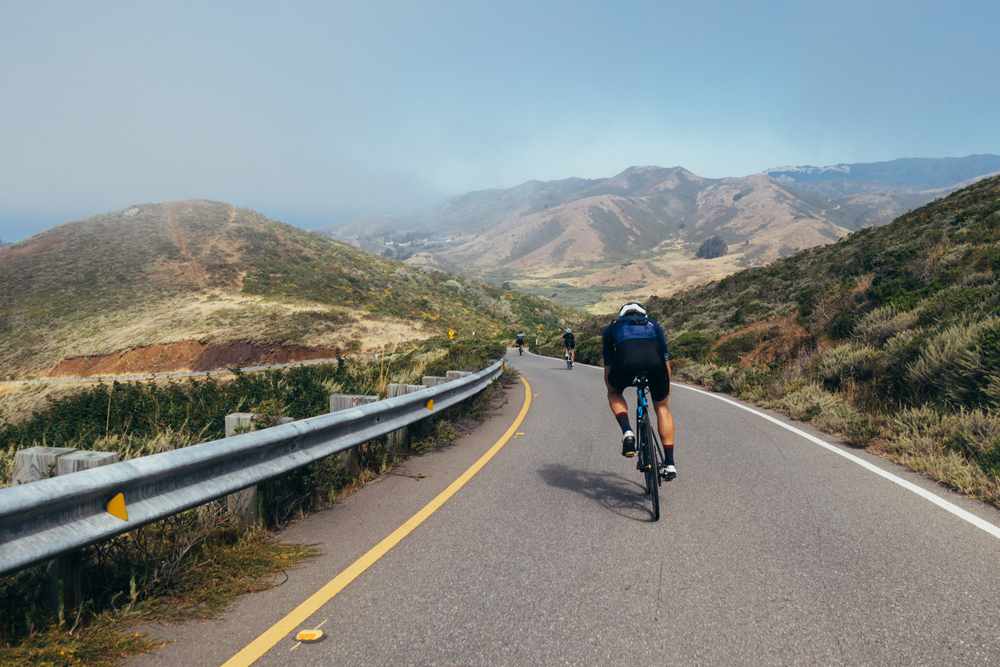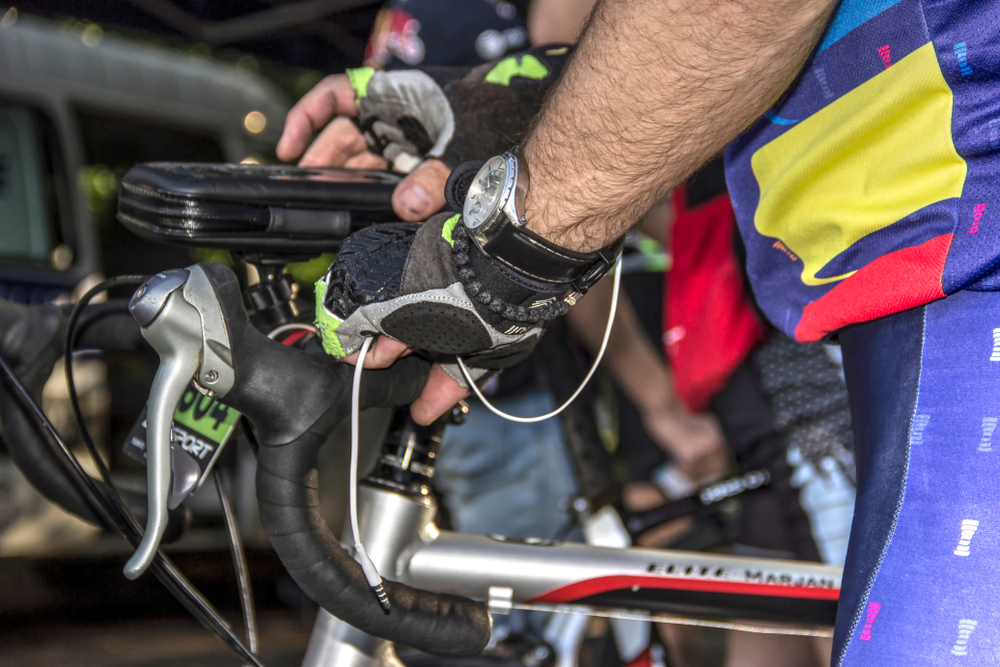Are you finding your weekend rides no longer provide the challenge you crave? If so, perhaps it’s time to consider ultra-cycling.
Balancing both physical endurance and mental strength, ultra-cycling presents a thrilling opportunity for cyclists to push their limits beyond traditional boundaries. Whether you’re a seasoned rider looking for a new challenge or a novice eager to explore the world of long-distance cycling, this comprehensive beginner’s guide is here to serve as your roadmap to navigating the complexities of ultra-cycling.

What is Ultra-Distance Cycling?
Ultra-distance cycling, or simply ultra-cycling, is a rapidly expanding sports discipline characterized by prolonged periods on the bike, typically lasting a minimum of six hours or covering distances exceeding 125 miles (200 km).
Ultra-cycling asks for some unique demands. If you are thinking of embarking on this journey, ensure you are ready. From understanding the fundamentals of endurance training to gaining mental strength and dealing with harsh weather conditions, we’ll walk you through the essentials of ultra-cycling.
Training for Ultra-Cycling
Taking on this challenge requires regular training. Craft a training system, gradually increasing the intensity, distance, and time of your long weekend rides. Your training must be regular, emphasizing strengthening your muscles and mountain training. You can also incorporate shorter, more intense sessions tailored to your specific challenge to improve overall performance.
Varying your pace during midweek training sessions helps simulate the dynamic conditions encountered during ultra-cycling events. Include over-geared accelerations in your training schedule to enhance muscular strength and performance. Additionally, consult a doctor before taking up this challenge to make sure there are no health limits.
Mental Strength
When it comes to ultra-cycling, increasing your training hours will not be enough. Mental preparation is just as crucial as physical training. You will need to develop mental strength, endurance and resilience.
- Embrace a positive mental attitude to overcome challenges and push your limits while being realistic and setting achievable goals.
- Learn relaxation techniques, such as meditation and deep breathing, to combat intense fatigue and calm yourself when it gets tough.
- Breaking the journey into short-term, manageable goals, like getting through the next five miles, is a popular strategy to make the ride easier.
- Utilize the power of positive self-talk to keep pushing forward, even when faced with physical pain and boredom, the most common problems on the road. Talk to yourself about the next steps and cheer yourself. Think of a motivational quote or a positive mantra that appeals to you and use it during the ride.
- Another good tactic is developing a reward system. Life becomes more manageable when you know an apple pie is waiting for you at the end of the road.
- Above all, enjoy the journey and find comfort in the ever-changing scenery, using it as a positive distraction.
Ultra-Cycling Equipment

Having the right equipment is crucial for both comfort and performance. Invest in a bike specifically designed for ultra cycling, ensuring that the components are a perfect fit for you. This includes a comfortable saddle, powerful lighting for night rides, reliable pedals, and panniers for carrying essentials.
Equip yourself with comfy cycling clothing designed for moisture management and aerodynamics. Don’t overlook the importance of helmets for safety.
Packing is Key
It’s essential to prioritize the items that will keep you safe, comfortable, and prepared for changing conditions. Make sure to carry tools and spare inner tubes for puncture repair, as well as strategic clothing to handle different weather conditions. Charged lighting and reflective clothing are crucial for cycling safely in low-light conditions.
Ensure that your bike is well-maintained by regularly checking for mud or dirt in the wheels and cables, lubricating the chain to prevent rust and ensure smooth operation, and keeping your tires properly inflated to the correct PSI while monitoring them for signs of wear and tear.
Nutrition Strategy
Carb-loading the day before your ultracycle is key to maximize glycogen storage. Focus on consuming a substantial breakfast and lunch to avoid feeling bloated, but prioritize carbohydrate density over volume. On race day, fuel up with a breakfast high in carbs for energy but low in fat and fiber to facilitate quicker digestion. Balancing your nutritional intake ensures sustained energy levels and optimal performance throughout your ultra-cycling journey.
Dealing with All Weathers
When going for an ultra, be ready to face any weather. You will have to adapt and tackle any conditions because just going home isn’t an option. Below are the most common weather challenges encountered in a race – and how to deal with them.
Rain increases the risk of mechanical failures, reduces visibility, and makes the ground slicker and the ride more dangerous, let alone causing discomfort. Wearing a high-quality rain jacket or over-trousers can provide essential protection during persistent rain. Carrying fenders can help protect against spray and minimize the risk of mechanical issues. Plastic bags can serve as makeshift overshoes, while newspapers can help dry out shoes. Cycling caps can shield eyes from extra water. Finally, it’s crucial to keep a set of dry clothes handy for changing during breaks or when the rain stops.

To manage heat and avoid overheating, stay well-hydrated throughout the ride and apply sunscreen to protect your skin from sunburn. Dressing in lightweight, brightly colored clothing helps to reflect sunlight and keep you cooler. Whenever possible, avoid riding during the hottest midday hours and opt for early mornings or late evenings instead.
When dealing with wind, being aerodynamic is key, so learn to get comfortable in an aero position. Being “in aero” means adopting a semi-horizontal position with your elbows resting on the arm cups of two aerodynamic extensions and your hands outstretched, holding the end of the two aero bar extensions. Leave bulky jackets behind to reduce wind resistance. If you can, plan your rides for early mornings or late evenings when winds tend to be calmer.
Recovery Days
Regular rest days should be an indispensable part of your training schedule. Learn relaxation, tension relief, and muscle recovery practices, such as gentle stretching and therapeutic massage. Take care of yourself before, during and after the ride. After completing a race or challenging ride, take several days or more to rest until you fully recover. Avoid engaging in intense physical activity during this time. Eat well and sleep well.
Speaking of relaxation, remember that mental health is equally important. Practice yoga and meditation to manage stress and promote overall well-being, keeping you sane.
As you embark on your ultra-cycling journey, remember that every pedal stroke brings you closer to unlocking your true potential as a cyclist. While the road ahead may be long and challenging, it is important to embrace the journey with determination, resilience, and an unwavering spirit of adventure.
Saddle up and conquer new distances!
You might also like these articles:
Bikepacking Food Planning: Key Insights and 20 Meal Ideas
Multi-Day Hiking 101: Essential Tips For Your First Trek
The 2024 Calendar of Ultra-Distance Cycling Events Around the World
12 of the World’s Most Spectacular Long-Distance Cycling Routes